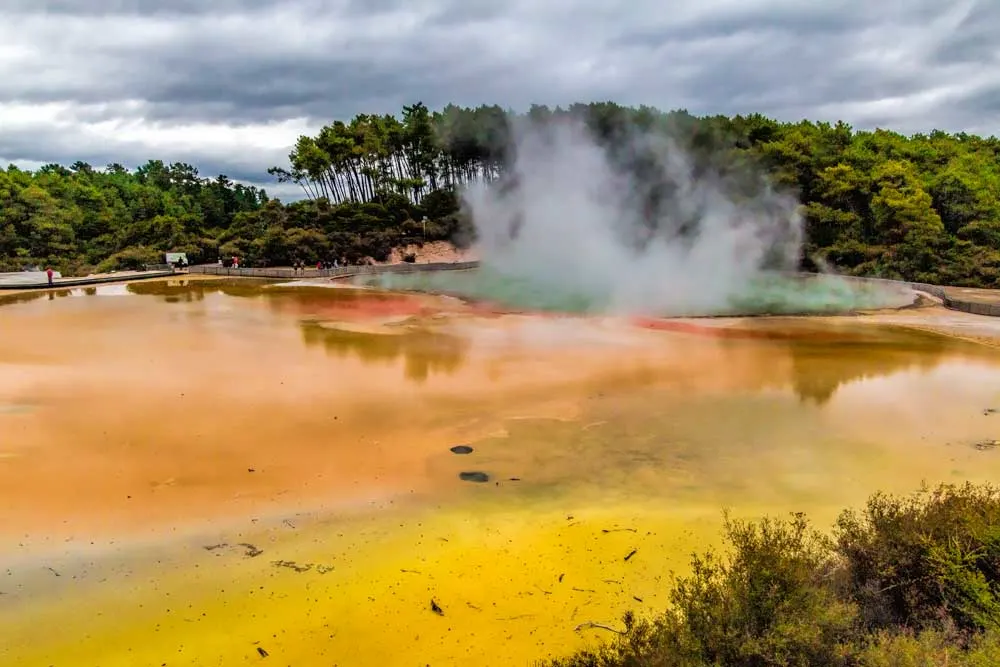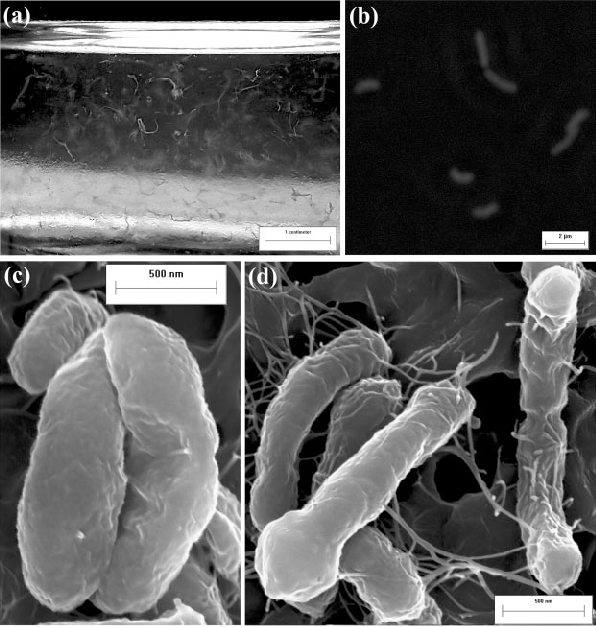New extremophile bacterium unique to New Zealand

Unlike larger organisms hindered by geographical barriers, microorganisms possess the uncanny ability to traverse vast distances, hitchhiking on water currents, soils, or even air currents.
Despite their microscopic stature, these microbial hitchhikers hold the potential to shape ecosystems and influence the biological landscapes they inhabit.
Venenivibrio in Aotearoa
Enter Venenivibrio, a thermophilic bacterial genus thriving amidst the geothermal wonders of the Taupō Volcanic Zone in New Zealand’s North Island. As part of the ambitious 1000 Springs Project, researchers embarked on a journey to explore the chemical, physical, and microbial biodiversity of a thousand hot springs dotting the North Island landscape.
Their endeavors led to the revelation of Venenivibrio’s prevalence in the scalding waters of the Taupō Volcanic Zone. Surprisingly, despite its prolific presence in New Zealand’s geothermal oases, Venenivibrio appeared conspicuously absent from international geothermal locales. This discovery sparked a quest to unravel the mysteries surrounding this heat-loving microbe.
What exactly are Venenivibrio bacteria?
Venenivibrio bacteria represent a fascinating frontier in microbial ecology, offering a window into the world of extremophiles and the unique ecosystems they inhabit. As thermophilic organisms, Venenivibrio species thrive in environments characterized by high temperatures, such as the scalding hot springs of the Taupō Volcanic Zone in New Zealand.
Our current understanding of Venenivibrio bacteria is primarily derived from extensive research conducted within these geothermal habitats. Through a combination of culture-based and genomic analyses, scientists have gained insights into the metabolic capabilities and ecological roles of these microorganisms.

One of the defining features of Venenivibrio bacteria is their chemolithoautotrophic metabolism, which relies on the oxidation of hydrogen gas as a source of energy. This metabolic strategy allows Venenivibrio to thrive in geothermal environments where hydrogen gas is abundant, serving as a key driver of their ecological success.
Furthermore, genomic analyses have shed light on the genetic adaptations that enable Venenivibrio bacteria to thrive in extreme conditions. These adaptations include the presence of heat shock proteins and enzymes capable of withstanding high temperatures and PH levels (75 °C, pH 5.5), as well as mechanisms for acquiring and metabolizing essential nutrients in geothermal ecosystems.
Despite their prevalence in the Taupō Volcanic Zone, Venenivibrio bacteria appear to be geographically restricted to New Zealand, with no records of their presence outside the archipelago. This pattern of endemism raises questions about the factors shaping the distribution and dispersal of these microorganisms.
The Secrets of Endemism
Professor Stott and his team delved deep into the labyrinth of microbial ecology, seeking to unearth the reasons behind Venenivibrio’s confined existence. Theories abound, ranging from metabolic constraints limiting its viability over long distances to geographical barriers hindering its dispersal beyond New Zealand’s shores.
The prevailing winds of New Zealand, Professor Stott elucidates, act as a formidable barrier, propelling microbes towards the icy embrace of the Southern Ocean rather than towards distant geothermal havens. Despite the prospect of using volcanic islands as stepping stones to traverse vast distances, the journey to international geothermal locales remains fraught with challenges.
Conservation Implications of Microbial Endemism
The discovery of an endemic microorganism holds profound implications for conservation efforts in New Zealand. Professor Stott underscores the intrinsic value of New Zealand’s geothermal ecosystems and their associated organisms, highlighting their status as taonga, or treasures, cherished by the indigenous Māori people.
As custodians of these precious ecosystems, conservation efforts must extend to the microbial level, safeguarding the delicate balance of life that thrives within these geothermal realms. Through collaboration with local communities and indigenous stakeholders like the Ngāti Tahu—Ngāti Whaoa Rūnanga Trust, conservation initiatives can embrace a holistic approach that honors both the natural and cultural significance of these unique habitats.
The discovery of Venenivibrio’s endemism stands as a testament to the interplay of geography, ecology, and evolution shaping the biological landscape of New Zealand. Amidst the grandeur of towering mountains and steaming geysers, a microscopic marvel unveils the hidden complexities of microbial life and its enduring legacy in this land of unique wonders.
Scientists discover microbe unique to New Zealand





